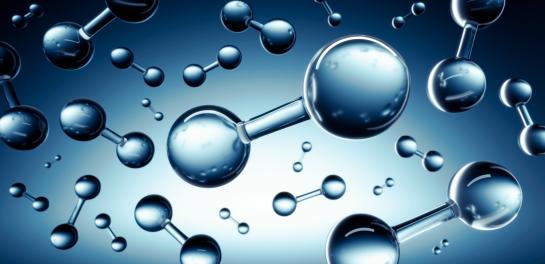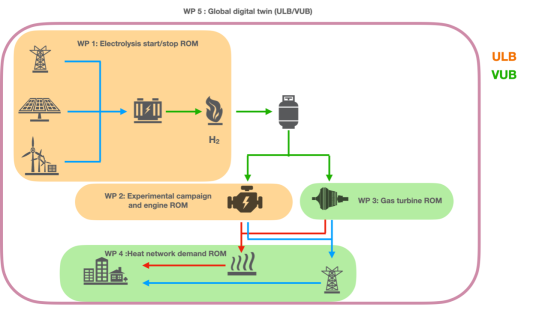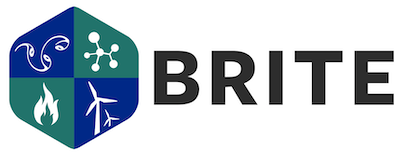
The H2GridTwin project aims at developing a digital twin for a future hydrogen-to-grid living lab. The digital twin will allow for advanced control strategies and optimal operation of the whole system to maximise the local consumption of green energy.
This project is funded by the Belgian federal Energy Transition Funds (SPF/FOD Economie).
The project is carried out within BRITE, such that the two official partners are Université Libre de Bruxelles (ULB) and Vrije Universiteit Brussel (VUB).
The project started in november 2023, and will end in october 2025.
Work plan
The project is divided into 4 Work Packages:

- WP1 (2023-2025). Based on the solid experience of the group in machine learning and uncertainty quantification, a grey box reduced order model having as output variable the “start/stop” signal of the electrolyser and as input the weather forecast, global renewable production, and hydrogen tank state among others will be created. This will be a forecasting model, and uncertainty quantification will be applied to assure its robustness.
- WP2 (2023-2025). The 10 kW engine of the ULB will be further modified and a mock-up heat network will be added. From the experimental results and 0-D simulations, a grey box model will be developed. This WP will also cover specific tests to be carried out on the 100 kW engine installed in the lab.
- WP3 (2023-2025) Based on the past experiments carried out on their micro-Gas Turbine, the VUB will develop a physically-informed digital twin of the equipment. This WP will also cover specific tests to be carried out onsite once the machine has been moved to the living lab.
- WP4 (2023-2025) Based on their past and current projects, and their own heating system, VUB will develop a digital twin of the heating network. This WP will also cover specific tests to be carried out onsite once the heating network of the lab will be available.
- WP5 (2024-2025) The digital twins developed in WP1-4 will be merged in a global digital twin of the lab. The feedback loop will be created by extending the predictive models to create a global control strategy for the site based on grey boxes, Physically-Informed ML. The control system will be tested, further trained and fine-tuned onsite.
Progress and news
The digital twins of the electrolyser (WP1), the IC-engine (WP2), the micro-GT (WP3) and the heat network (WP4) are currently under development.
In mid-September 2024, we successfully tested the micro-GT before relocation to the future living lab. After solving a few minor issues due to a long previous idle period, the Old Lady ran like a charm from 50 to 100 kW. She is now ready to move to her new home, where the burner, fuel train, and control system will be upgraded to operate with Hydrogen!
